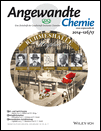Ruthenium(V) Oxides from Low-Temperature Hydrothermal Synthesis†
We thank Johnson Matthey Plc for the provision of a CASE studentship for C.I.H. Some of the equipment used in materials characterization at the University of Warwick was obtained through the Science City Advanced Materials project “Creating and Characterising Next Generation Advanced Materials” with support from Advantage West Midlands (AWM) and part funded by the European Regional Development Fund (ERDF). We are grateful to Diamond Light Source for provision of beamtime for the XANES and synchrotron XRD experiments, and to the STFC for neutron diffraction experiments at ISIS, including the GEM Xpress service. We thank Dr. H. Y. Playford, Dr. A. J. Dent, L. M. Daniels, Dr. C. C. Tang, Dr. A. S. Munn, and M. I. Breeze for help with data collection at these facilities. Thanks are also expressed to D. L. Burnett for help with microscopy, L. M. Daniels for TGA, and to I. Briggs and A. M. Rusu for ICP elemental analysis.
Abstract
Low-temperature (200 °C) hydrothermal synthesis of the ruthenium oxides Ca1.5Ru2O7, SrRu2O6, and Ba2Ru3O9(OH) is reported. Ca1.5Ru2O7 is a defective pyrochlore containing RuV/VI; SrRu2O6 is a layered RuV oxide with a PbSb2O6 structure, whilst Ba2Ru3O9(OH) has a previously unreported structure type with orthorhombic symmetry solved from synchrotron X-ray and neutron powder diffraction. SrRu2O6 exhibits unusually high-temperature magnetic order, with antiferromagnetism persisting to at least 500 K, and refinement using room temperature neutron powder diffraction data provides the magnetic structure. All three ruthenates are metastable and readily collapse to mixtures of other oxides upon heating in air at temperatures around 300–500 °C, suggesting they would be difficult, if not impossible, to isolate under conventional high-temperature solid-state synthesis conditions.




